How I Scaled My Business Without Hiring: Building My First AI Agents for $0
Co-authored by Juan M. Salas-Romer and Alex Pawlowski
The Missed Memo
A few months ago, over coffee, a business owner I admire who is sharp, scrappy, and the kind of founder who built everything from scratch leaned in and said,
“Hey Juan, I think I missed the AI memo while I was busy… you know, running an actual business.”
That line stayed with me. I often hear it from small-business owners juggling payroll, customers, and a thousand fires. They aren’t chasing hype or dreaming of humanoid robots; they just want AI to help them reclaim time and sharpen results.
A few months later, I met Alex Pawlowski, a tech strategist, investor, and author who writes
, a publication for leaders navigating AI, innovation, and enterprise strategy. Alex had just finished building his first set of AI agents that saved him over seven hours a week on a zero-dollar budget.His story was so vivid and practical that I asked him to co-write a follow-up piece that would bridge strategy and action. I’d explain the framework, and he’d show how he actually built it.
Alex:
It was 11:43 p.m. on a Tuesday, and I was staring at a Notion board full of half-finished tasks.
Product updates. Marketing copy. Ops metrics. Support emails.
My company had just crossed 8 people, and I was already working more than when it was just me. Hiring more people wasn’t the solution, at least not yet. I didn’t need more payroll, I needed leverage.
That’s when I decided to build my first AI agents without getting into fancy APIs or devs, but with tools I already had. Think of this as the MVP approach to scaling: simple, scrappy, cheap, and surprisingly effective.
Juan:
Step 1: Figure Out What’s Slowing You Down
Before anyone touches an AI tool, clarity comes first. The fastest way to get ROI from automation is to start with a problem that hurts, the task that drains hours or repeats endlessly.
Actionable Tip: Make a “Pain Point Priority List” with three columns: business area (like customer service), challenge (like slow response times), and potential AI solution (like a chatbot). Pick one high-impact area to start.
Alex:
Before touching any tools, I listed every repetitive task I did in a week.
Here’s what came out of that:
It turned out, almost half of my weekly work was repetitive. So I picked three to automate: marketing, ops, and customer success.
Juan:
Step 2: Find Tools That Fit Your Budget and Brain
Most founders assume AI requires deep pockets or engineers. Not true. Today, there’s a sea of plug-and-play tools designed for small teams, Tidio or Intercom for customer questions, Mailchimp AI for smarter campaigns, Zoho Inventory for predictive stock control, or even ChatGPT and Jasper for creative brainstorming. I have added them to The Vault, my growing inventory of prompts, tools and tactics for business operators.
Actionable Tip: Pick two or three tools for your top problem. Check their features, pricing, and reviews on sites like Capterra or G2 to find the best match.
Alex:
My First “Agent”: The Content Repurposer
I started with something small, as I was spending hours rewriting content for Twitter, LinkedIn, and our newsletter.
So I created a Google Sheet with 3 columns:
Post Link | Summary | New Post Ideas
Then, in ChatGPT (free version), I pasted this prompt:
“You’re my marketing assistant. Read these posts and create 3 short LinkedIn posts and 2 tweet threads per article. Keep my tone: friendly, founder-to-founder, slightly informal.”
I dumped in five recent blog links. Ten minutes later, I had enough content for two weeks.
Now, I update that Sheet every Friday and let ChatGPT do the first drafts.
Total setup time: 30 minutes.
Cost: $0
Time saved per week: ~3 hours.
My Second “Agent”: The Daily Brief
Every morning, I was opening five dashboards: Stripe, Notion, Google Analytics and Airtable, just to see what changed overnight.
So I created a simple Google Sheet that collected key numbers.
Then, in ChatGPT, I pasted:
“Summarize this data into a 3-sentence Slack update. Highlight any anomalies or negative trends. Keep it concise.”
I connected Zapier’s free plan to pull the sheet into Slack each morning.
Now, I get a 3-line digest at 8:30 a.m. daily, no more data rabbit holes.
Time saved: 20 minutes/day.
Cost: $0.
Complexity: basically none.
My Third “Agent”: The Support Summarizer
Customer support was eating hours. So I exported our last 30 help emails from Gmail, pasted them into ChatGPT, and said:
“Group these by recurring problem. Write 3 reusable response templates that sound human.”
The result? A mini knowledge base of macros I now copy-paste into replies. I even share it with our part-time support person.
This one trick dropped our average response time by 40%.
Juan:
Step 3: Measure. Test It Out for 30-days with a Small Project
Don’t go all-in yet. Start with a small test, what the experts call a pilot project. This lets you try AI without risking your whole operation. Pick one problem, like answering customer emails or tweaking your marketing, and run a 30-day trial.
Actionable Tip: Choose one tool and try it for 30 days. Track a couple of metrics, like time saved or customer feedback, to see if it works.
Step 4: Integrate. Make It Part of Your Daily Grind
If your pilot’s a hit, it’s time to weave the AI tool into your everyday operations. This means hooking it up to your current setup, like linking a chatbot to your website or syncing an AI tool with your sales data. It can feel tricky; 52 percent of small businesses worry about data privacy, and 50 percent say they lack tech skills (Bipartisan Policy Center, 2024).
Actionable Tip: Book a training session with the tool’s provider and pick a team member to be your “AI champion” to manage the rollout.
Alex:
I built me own mini-playbook in Notion. Each page documented the workflow, prompt, setup, and time saved.
“When I hired part-time help, I just shared that Notion page,” he said. “They were onboarded in a day.”
Integration isn’t about sophistication, it’s about repeatability.
Juan:
Step 5: Iterate, check the Results and Grow
After thirty days, evaluate what changed. Compare before-and-after numbers — time, cost, or customer feedback.
According to McKinsey, small businesses can cut operating costs by up to 30 percent with even limited AI adoption.
Actionable Tip: Put together a quick report comparing old and new numbers, like response times or sales, to decide where to use AI next.
Alex:
Here are my numbers:
Seven and a half hours every week won back without hiring a single new employee.
My lessons learned
Start embarrassingly small. My first “agent” was literally a Google Sheet and a prompt.
Keep a human in the loop. At least until outputs are predictable.
Measure time saved, not tasks done. That’s the real ROI.
Document your agents. I keep a Notion page for every workflow with its prompt, setup, and cost.
If You Want to Try This
Here’s your 30-minute starter plan:
Write down 3 repetitive weekly tasks.
Choose 1 to “agentify” this weekend.
Open ChatGPT, describe the process in plain English, and ask it to help you automate.
Use Google Sheets or Notion to capture inputs/outputs.
Run it manually once. If it works, automate via Zapier or Pipedream (both free tiers).
You’ll be amazed how far a few free agents can go.
Resources I Actually Use
ChatGPT Free — My base layer for every agent
Zapier Free Tier — Simple workflows
Notion Free Plan — Task storage
Airtable — My “cheap CRM”
Pipedream — Bonus for light automations
Juan:
Step 6: Keep Learning and Stay Flexible
AI changes by the week. In 2025, small teams can spin up “AI agents” for scheduling, analytics or inventory alerts in a weekend. The winners aren’t those who know everything, but the ones who keep experimenting.
Alex updates or replaces one agent every few months.
“Some ideas flop,” he admits, “but the good ones stick. Scaling isn’t about adding complexity, it’s about stripping friction.”
Actionable tip: keep curiosity alive. Subscribe to trusted AI newsletters, follow credible voices, and test new tools on a small scale. Every iteration compounds your leverage.
Wrapping It Up
When I think back to that founder who told me he’d missed the AI memo, I realize he wasn’t alone, he was simply early to admit what most business owners feel. Change is noisy. Tools evolve daily. And while everyone talks about disruption, few explain what the first practical step looks like.
That’s what I appreciated about Alex’s story. It wasn’t about hype, it was about leverage, about finding smarter ways to do the same work with less friction. No new hires. No fancy dashboards. Just clarity, intention, and a few simple systems that compound over time.
AI doesn’t have to replace what makes a business human. It can protect it by giving operators back the time, focus, and creative energy that growth usually steals.
So if you’ve felt like you missed the memo, consider this your reminder:
You’re not late. You’re right on time as long as you start now.
Feel free to reach out to me
or to for any question or comments. If you like to subscribe to Alex’s newsletter click on the link below:If you like to go through a similar process to save time and improve your operations, I built an on-demand AI consultant that identifies your business bottlenecks, maps your current workflows, and designs simpler, faster systems — complete with tech stack, custom prompts, and ROI projection.
Get
✅ Clarity on where your time leaks
✅ A redesigned, working process — with guide and tech stack
✅ Estimated and measured ROI
✅ SOPs and training so you can delegate and scale
Think of it as your shortcut from idea to implementation. It is offered through my Gumroad store: AI Business Process Time Saver GPT
I use this space to share ideas and voices that help founders and creators think more clearly, act more intentionally, and build systems that last.
My work focuses on helping entrepreneurs bring order to growth and clarity to complexity, moving from chaos to control, and from control to sustainable growth.
If you are struggling with growing your company, here are some ways I can help:
Setup a FREE 20 minute call with me directly to talk about possibilities Click Here
Visit my page for more information about the program Click Here
Or message me
Some popular articles:
AI Is Here. Let’s Get Your Business in the Game.
The Science of Execution: Why Most Founders Stay Stuck (and How to Break Through in 90 Days)
How to Build Assets That Compound (Even When Life Forces You to Pivot)
Everyone’s Rushing to AI. Few See the Ceiling Ahead.
Scaling Smart: 5 Systems Every Solopreneur Needs to Grow Without Burning Out
Built to Blaze: How Ooni Turned Backyard Pizza into a $200M Global Movement
How Athletic Brewing Disrupted a Dead Market





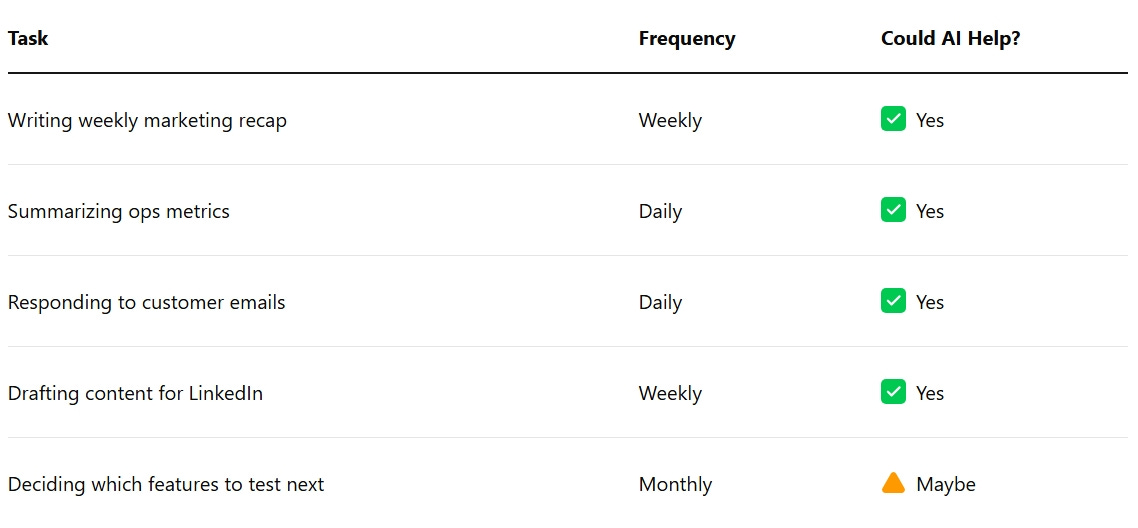
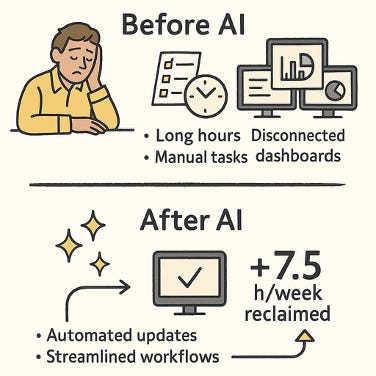
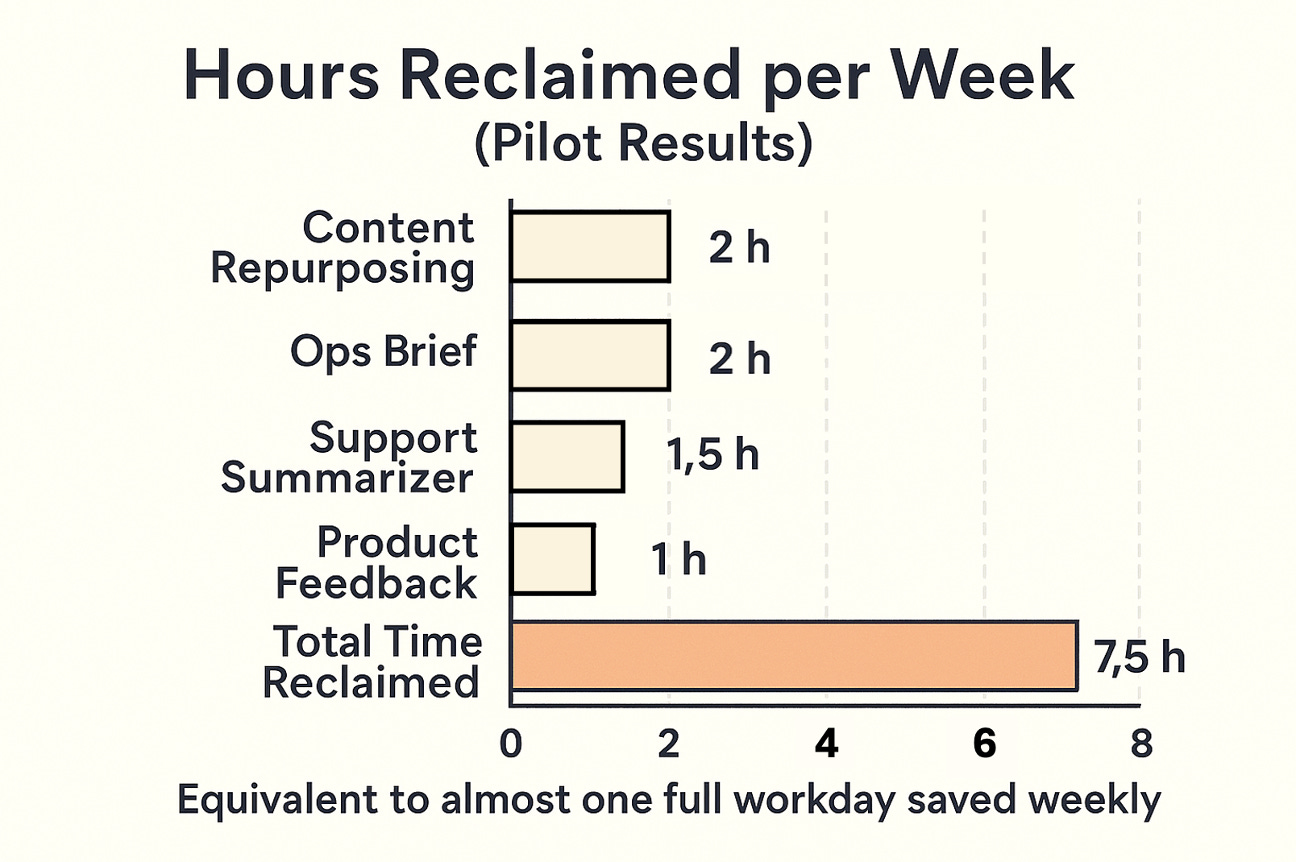
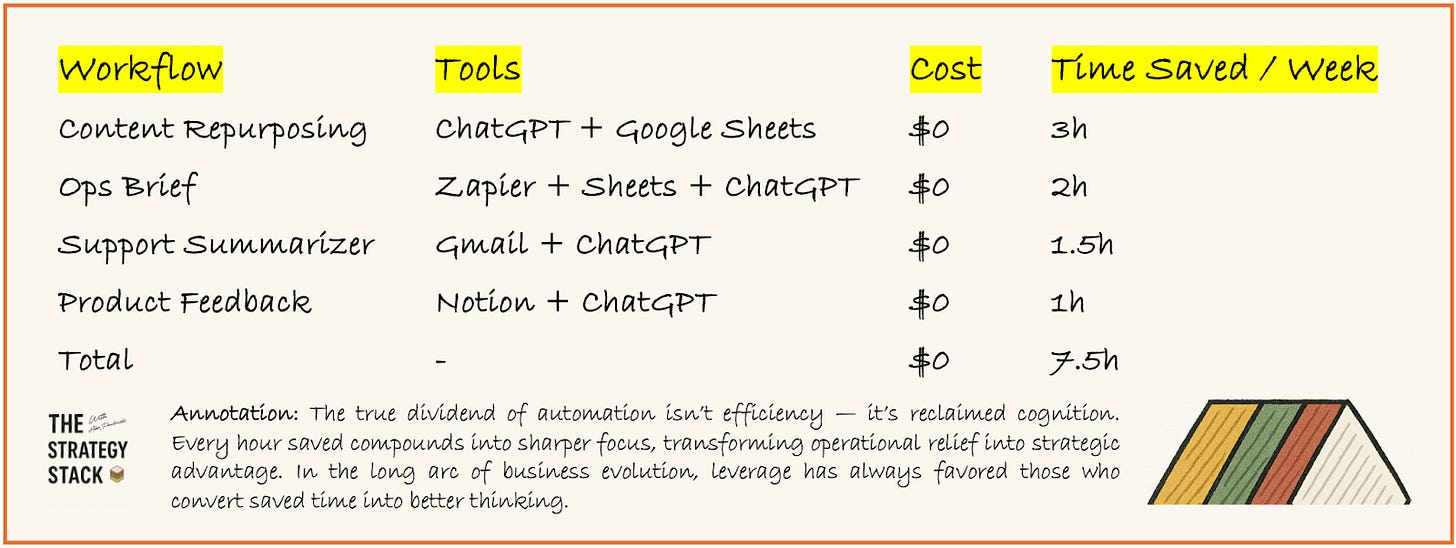

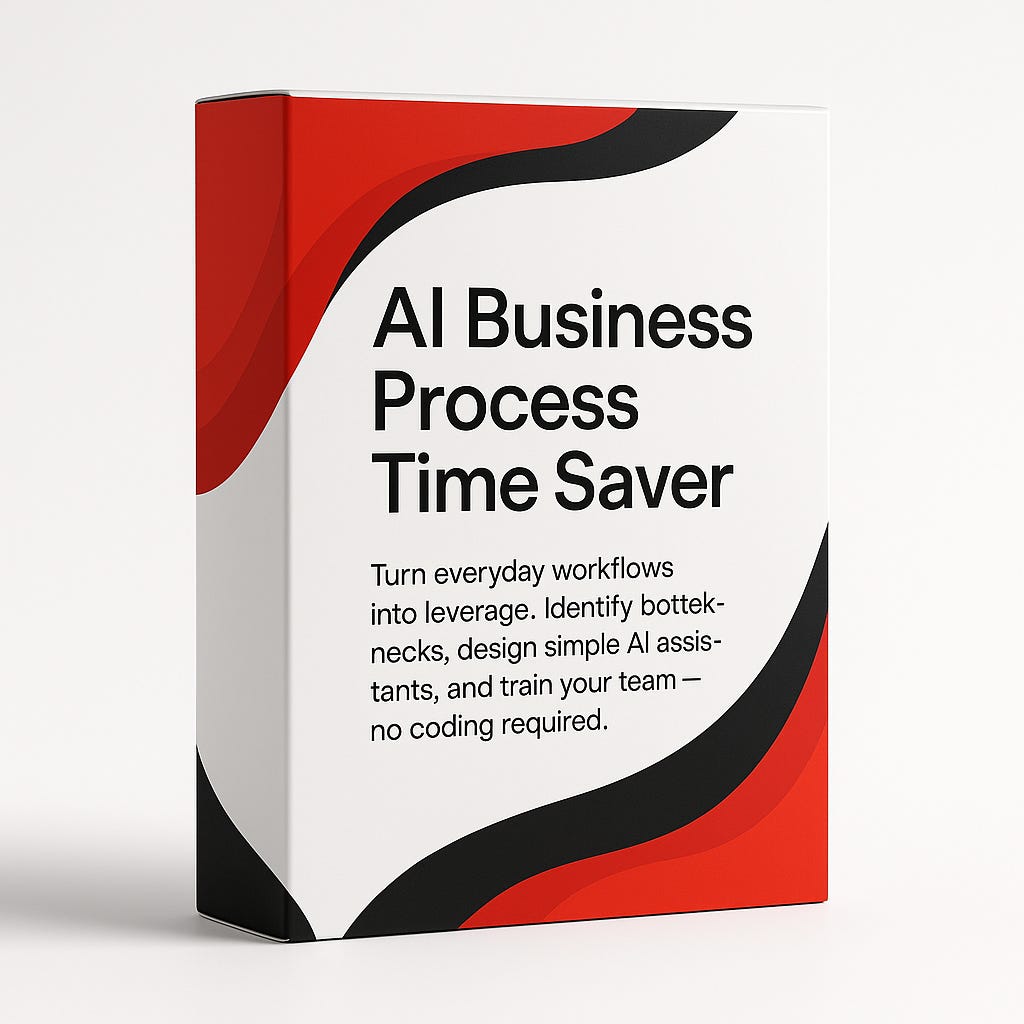


I found this useful and reassuring. I have a few of these on the go, more to learn but really focus on the ROI of time saved versus tasks completed is great advice
This is a paradigm shift for any small business owner or founder juggling a thousand things at once.